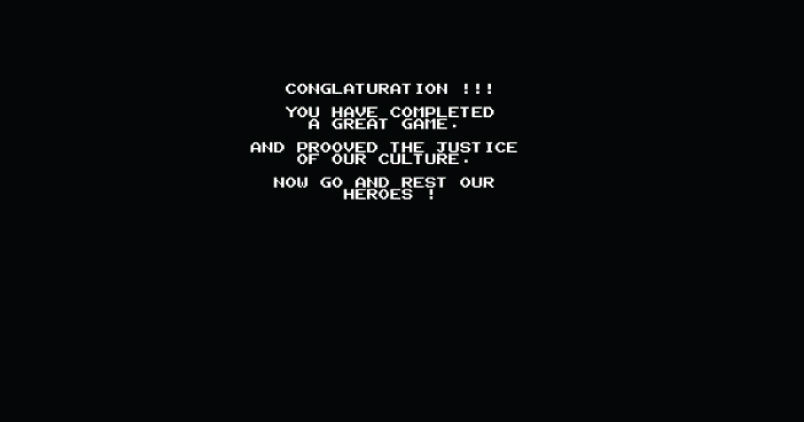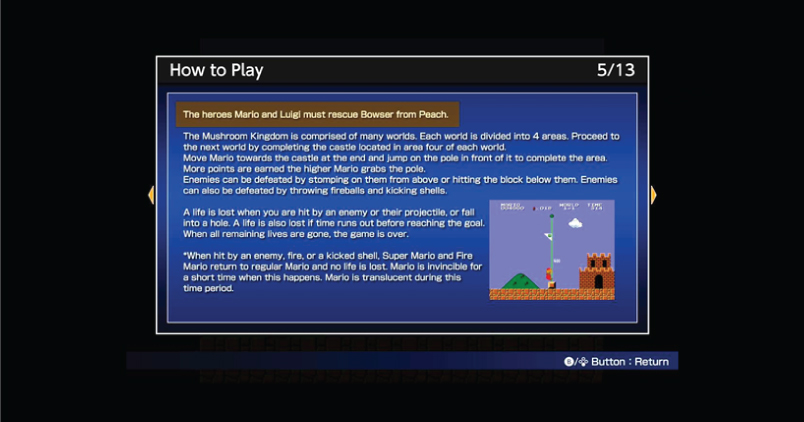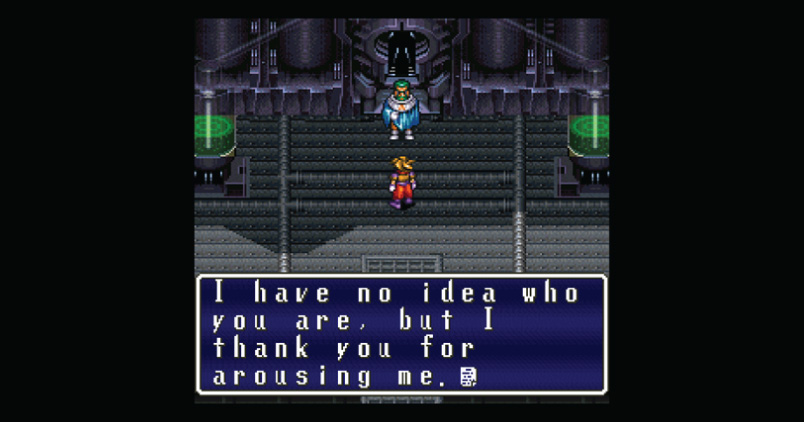Language translation, cultural interpretation, and monetization are all vital components of a successful localization strategy.
For video game publishers, localization is key to releasing games in other countries and achieving global success. That said, video game localization encompasses so much more than language translation, and publishers need to plan accordingly. There are many other elements that comprise the localization process including cultural references, infrastructure updates, and global pricing optimization. Here’s everything publishers should know about the localization process.
Jump to a section…
What is video game localization?
How video game translations unlock global publishing opportunities
Mobile game localization: A 3-step guide for publishers
- Step 1: Determine where to localize
- Step 2: Assemble a translation team
- Step 3: Adapt your monetization strategy
What is video game localization?
Video game localization is the process of adapting a video game developed for one region for sale and/or distribution in another. The best localization initiatives are a comprehensive series of thoughtful changes based on a target region’s linguistic and cultural expectations, but the process varies depending on a number of factors: size and genre of the game, desired localization targets, publisher resources, and so on.
There are four core elements of the video game localization process:
- Language: The most obvious step in the video game localization process is translating the game’s dialog or instructions into the new region’s dominant language, but that’s just the starting point. A direct translation will rarely sound natural to a native speaker, so a nuanced approach is required to avoid language gaffes.
- Culture: To understand the importance of video game localization of a region’s culture, all you have to do is give a thumb’s up. In most countries, people will greet you with a smile, but you’ll be considered rude in the Middle East, where the gesture is the equivalent of flipping someone off. Likewise, cultural attitudes about money, sex, violence, drug use, alcohol, and religion vary wildly around the world.
- Internalization: A hidden aspect of video game localization is internalization, which makes the game’s infrastructure adaptable to any region, regardless of language. Internalization also addresses UI details like date and time conventions and name display.
- Monetization: For games with in-app purchases or microtransactions, monetization is necessary to maximize revenue potential in other regions. A user has to understand the instructions for making in-app purchases, the cost should be a good value in the local currency, the reward has to be appropriate for the culture, and the presentation needs to look as polished as the rest of the game.
Want to know more? Read the full article: What is Video Game Localization?
How video game translations unlock global publishing opportunities
As stated above, translations are just one part of the overall localization process, but even that step is more complex than it sounds. According to Elizabeth Bushouse, a video game translator and author of a Master’s Thesis entitled The Practice and Evolution of Video Game Translation: Expanding the Definition of Translation, “Video game translation combines elements of software, literary, theater, audiovisual translation, and more. Because of this, while the individual aspects included in the process may not be unique to video games, such as subtitling or use of programming code, it is the specific combination of all of these into one product that sets video games apart from other types of translation.”
When done well, video game translations can turn a project from a niche title into an international phenomenon. When done poorly, they end up in the Bad Game Translation Hall of Fame. Additionally, badly translated games are subject to poor reviews, which often correlate with poor sales. That’s why understanding the process of video game translations is critical for publishers who want to increase sales while expanding their reach.
How do video game translations work?
One of the first things game publishers and their translation teams must do is decide what languages make sense for the project. Obviously, publishing in major markets for the games industry is a priority, but not the only factor to take into consideration. Be realistic about how your game could be perceived in other languages and cultures; is it relatable and understandable for people in other regions? Is it built on a technological framework that supports nuances like left-to-right and right-to-left reading and varied character counts?
For an example of video game translations done right, look no further than Atlus’ Shin Megami Tensei: Persona series. The Persona games are set in Japan, but the series makes Japanese culture understandable and accessible. Persona 5, originally released in Japan in 2016 and worldwide the following year, feels like it’s taking the player on a guided tour of Tokyo, rather than dropping them off in unfamiliar territory or changing the setting to a more familiar western city.
According to Persona translator Yu Namba, “When localizing a Japanese game, there’s always something that simply won’t make sense to the Western audience if translated word for word. Similarly, there may be lines that are too long to fit in the text window or the time allotted in a scene. What to keep, what to cut out, what to change, what are the consequences — it’s always a tough call, and the approach is different for each person.” Naturally, this philosophy doesn’t just apply to Japanese games; publishers should assume any video game translation will need this kind of attention to detail.
In the case of Persona 5, the painstaking process paid off: sales of the original release and enhanced rerelease hit 4.6 million units, a significant portion of the formerly niche series’ 13 million units of lifetime sales.
On the other hand, rushing through the translation process or taking shortcuts can spell disaster. While worldwide releases are ideal for sales, they rely on translators to work on a game that may be early in the development process. As Bushouse explained, “Translators may have little to no access to the context of what they are translating, as the visuals or other information may not even have been constructed yet. Translators end up having to translate twice the amount of text or more, as the developers rewrite or change scenes.”
Game translations gone wrong
The problem with good video game translations is that they’re largely invisible. If the copy is clean, the dialogue makes sense, and the cultural references are understandable, players generally aren’t thinking about how the game was translated.
On the other hand, bad game translations are all too easy to find, as they tend to live on in infamy. No bad translation is safe from scrutiny, whether it’s an obscure Sega Mega Drive game or a widely revered cultural phenomenon. Here are a few other examples of video game translation gaffes courtesy of the Bad Game Translation Hall of Fame:
Ghostbusters (NES)

Vs. Super Mario Bros. (Switch)

Terranigma (Super NES)

To learn more about the video game translation process, read the full article: How Video Game Translations Unlock Global Publishing Opportunities.
Mobile game localization: A 3-step guide for publishers
There’s no easy way to localize a video game. Because of the interactive and technological nature of games, the localization process is often more complicated than in other mediums. More than just language translation, game publishers have a number of factors to consider when publishing in new markets.
This is especially true for mobile publishers. While many localization challenges and processes are universal across platforms, mobile game localization also varies in a few significant ways. Mobile publishers need to consider things like device penetration, popularity of different mobile genres, monetization aspects, and other things specific to their platform of choice. Mobile publishers must adopt a mobile-first approach to localization.
Step 1: Determine where to localize
Your first instinct might be to release in as many countries as possible to maximize global revenue, but only the biggest companies have the ability to scale so dramatically. In many cases, mobile publishers need to be more thoughtful about their expansion. For example, console and PC game publishers often start in countries where the video game industry is thriving, but mobile publishers should consider smartphone penetration on a country-by-country basis. There’s some crossover here — China is the country with the highest number of smartphone users and largest game revenues, for example — but considering device usage is key for mobile localization.
Another thing for mobile publishers to think about is which mobile platforms to support. Once again, the ideal option isn’t always the most economically realistic one, so releasing on both iOS and Android simultaneously might not be viable. In many countries, iOS is the dominant mobile operating system, but there are some regions where Samsung devices are more popular (Latin America being just one example). If your mobile game is already restricted to a single OS, this is an especially important step in determining where to expand.
Finally, research how popular your genre of mobile game is in the markets you’re considering. In the United States, mobile gamers favor MMO strategy games, match-3 puzzlers, and casino slots apps, but that’s not the case everywhere. If your localization efforts are limited, this step can help you hone in on the countries where you’re most likely to succeed.
Step 2: Assemble a translation team
Whether you have the budget for a single translator or a gaggle of linguistic experts, you’ll want a team that understands the nuances of video game localization, not just someone who speaks the desired language. Games are an interactive medium, and there are often multiple dialogue choices, branching questlines, and various outcomes to consider, all of which need to make sense contextually.
Again, it’s critical for mobile publishers to understand that translation doesn’t just refer to changing text and voiceover from one language to another. One of the most important aspects of the translation process is culturalization, or making sure every element of the game means what it’s supposed to outside of its native region while making the concepts relatable to foreign audiences.
In an interview with VentureBeat, Jenny Taran, Head of Growth at Activision, said, “For Call of Duty: Mobile, international expansion means not just to localize but to culturalize; only if the game and marketing feel locally relevant and engaging will we connect with audiences globally.”
Lion Studios’ Katja Llach echoed this sentiment: “Deeper cultural localization can yield more meaningful performance lifts than simple copy/text translations. Gaining insights into what’s trending or popular in a specific country and finding ways to incorporate that into creatives (or even games) can yield significant performance lifts.” In other words, the right translation partners can put you on the path to international success.
Step 3: Adapt your monetization strategy
One of the biggest differences between mobile games and those on more traditional platforms is how publishers earn revenue. While the lines between static game and live service are becoming increasingly blurry across the board, mobile games are in a league of their own when it comes to monetization. Many of the world’s top-grossing mobile games are free-to-play titles supported by in-app purchases, ad revenue, or both.
So what does this have to do with localization? Well, just as no two languages or cultures are exactly the same, currency values vary from region to region. This value can be impacted by economic factors and global events, so it’s not enough for publishers to simply convert in-app purchase prices from one currency to another. As Wooga’s former Product Lead Patrick McGrath put it, “Just look at Brazil — an in-app purchase that cost the equivalent of $1 a few years ago now costs the equivalent of $6, and that value proposition isn’t good. Realistically, you’re not going to sell anything that way.”
That said, failing to consider the monetization aspect of localization could mean missing out on growth and revenue opportunities. As McGrath told wappier, “The days of relying on just the United States are long gone, and being a top game in the US isn’t enough anymore.” Instead of losing potential revenue sources, consider working with international monetization experts like wappier. We help mobile publishers localize IAP on a per-country basis by analyzing macroeconomic, microeconomic, device, and game data, as well as testing and optimizing the most effective monetization strategy for each region.
To learn more, check out Mobile Game Localization: A 3-Step Guide for Publishers.
The 5 best game localization services for publishers
Game localization services are used to modify video games to make them playable and understandable outside of their country of origin. Publishers might use external services to complement their in-house localization team or take over the entire process; every publisher has different needs. With so many game localization services available, it’s hard to know where to start, so we’ve rounded up a list of top-tier game localization services with established success stories.
Before getting started, here are three things every publisher should take into consideration when searching for localization services:
- Available languages and native speakers: It goes without saying that video game localization companies should be able to translate into your desired languages. Some companies can translate into around a dozen languages, while others offer five times as many language pairs.
- Budget and pricing structure: Some services have project and budget minimums, while others can be utilized a la carte. Consider how these services fit into your budget, particularly if you’re a smaller studio.
- Video game expertise: Because of their interactive nature, localizing video games is very different from other forms of media translation. You want a company that fully comprehends the industry and the unique properties of video games.
Level Up Translation
Led by “seasoned game translators,” Level Up Translation works with publishers to deliver localized versions of games in over 20 languages, including French, Spanish, Japanese, and Chinese. Level Up uses native speakers and experienced gamers to deliver localized versions of games on almost every platform, from PC and console to mobile and browser. What’s key here is Level Up’s promise to “make sure your game’s localization feels natural, speaks to the players and their culture, meets compliance requirements, and uses appropriate first-party terminology.” As an added bonus, Level Up can also help publishers pass the necessary compliance tests and QA standards and provides multilingual marketing assistance.
Alconost
A “quality-first localization company,” Alconost localizes games, apps, and websites into more than 70 languages. In addition to localization, Alconost also offers video production and multilingual marketing. Among its 1,500 completed projects are linguistic QA of Paradox Interactive’s Stellaris and BattleTech, continuous localization for mobile hits like MyCafe, and the 150,000-word translation of the TikTok app. The company tailors its solutions and prices to each publisher’s project, rather than applying a one-size-fits-all approach to localization.
Nitro
Nitro is technically owned by Alconost, but its unique pricing structure and quick turnaround times make the service an essential tool for smaller game developers and publishers. As a standalone service, Nitro offers pay-as-you-go pricing with no minimum orders, with rates for language translations listed clearly on its website. Oh, and speaking of languages, Nitro employs professional native-speaking translators for over 70 of them, with 96% of orders ready within 24 hours. It’s not as robust as other services on this list, but it’s easy, fast, and affordable — perfect for smaller publishers on a tight deadline and limited budget.
Glyph Language Services
According to its website, Glyph uses “cutting-edge technology and translation tools that enable us to improve video game translation consistency and efficiency.” Glyph’s services include computer-assisted translation tools like MemoQ, which assists publishers with terminology and project management, QA, filters for non-translatable terms, and more. Boasting big-name clients like EA and Epic Games, Glyph Language Services assists with everything “from script localization all the way to final in-game testing” and even offers ongoing support for post-launch updates, which is becoming ever more necessary with “games as a service” dominating the landscape.
Localize Direct
Offering translation, quality assurance, and a custom CMS designed with localization in mind, Localize Direct starts out at a mere €0.11 per word (minimum order €40) with payments in EUR and USD. Among the 1,000+ games Localize Direct has localized are titles from publishers like Warner Bros., Square Enix, Bethesda, Rebellion, and a number of other recognizable studios. And with more than 65 language pairs, Localize Direct very likely has native speakers in your desired language.
For more information, see The 5 Best Localization Services for Publishers.
It’s time to go global
Video game localization may not be simple, but it’s certainly rewarding. Understanding the process from top to bottom will help you form an effective global expansion and unlock new revenue streams. Remember, you don’t have to do it all alone — the right localization service can help with almost any aspect of video game localization, from language translation to marketing to post-launch support. And when it’s time to monetize, the experts at wappier will be standing by, so get in touch!







